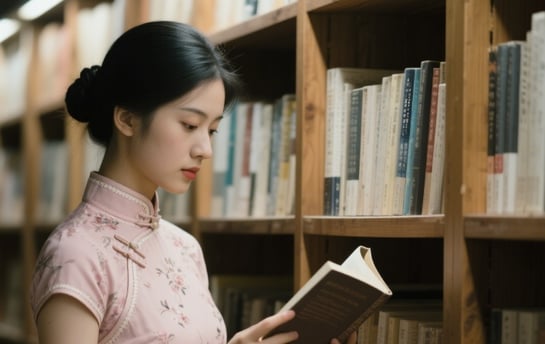What is the Chinese Word for Qipao
The qipao, known as "旗袍" in Chinese, is a dress with a high neckline and slit skirt, embodying Chinese femininity and elegance.
QIPAO KNOWLEDGE
6/27/20252 min read


The Etymology of Qipao: Tracing the Name
The term qipao consists of two Chinese characters:
旗 (qí): Originally referred to the "banner" system under the Qing Dynasty (1644–1912), where ethnic Manchu people were organized into eight military-social banners.
袍 (páo): Means "robe" or "gown," a traditional garment worn by both men and women in ancient China.
Thus, qipao literally translates to "banner robe." However, this name is a product of historical irony. During the Qing Dynasty, Manchu rulers imposed the qipao as part of their "queue order," forcing Han Chinese men to adopt Manchu-style clothing and hairstyles. The early qipao was loose-fitting, one-piece, and worn by both genders, serving as a symbol of cultural assimilation under imperial rule.
From Imperial Robe to Femininity: The Metamorphosis of Qipao
The modern qipao—slim, form-fitting, and associated with women—emerged in 1920s Shanghai, a city at the crossroads of tradition and modernity. Several factors contributed to its transformation:
Cultural Hybridity: Influenced by Western fashion, tailors began altering the qipao to emphasize female curves, incorporating elements like waistlines and hemlines.
Feminist Undertones: As women gained educational and professional opportunities, the qipao became a tool of empowerment, blending modesty with allure.
Urban Chic: Shanghai's elites adopted the qipao as a statement of sophistication, pairing it with modern accessories like watches and handbags.
Ironically, the garment named after Manchu "banner" culture became a symbol of Han Chinese modernity. This paradox highlights how clothing can transcend its original political context to embody new cultural ideals.
Qipao vs. Cheongsam: A Name Debate
In English, the qipao is often called a "cheongsam," a term derived from the Cantonese pronunciation of chángshān (長衫, "long gown"). However, this creates confusion:
Qipao refers specifically to the women's dress.
Cheongsam historically described men's long gowns in Guangdong.
This linguistic duality reflects China's regional diversity and the challenges of naming cultural artifacts in a globalized world. While "cheongsam" is common in Southeast Asia and the West, Mandarin-speaking regions universally use qipao.
Cultural Symbolism: Beyond the Seams
The qipao is more than fabric—it is a canvas for Chinese identity:
National Pride: During the 1930s–1940s, the qipao was promoted as China's "national dress," embodying unity amid fragmentation.
Cinema and Soft Power: Films like In the Mood for Love (2000) catapulted the qipao into global consciousness, associating it with mystery and grace.
Modern Revival: Contemporary designers reimagine the qipao with asymmetrical cuts, digital prints, and eco-friendly fabrics, appealing to younger generations.
Conclusion: A Name That Speaks Volumes
The Chinese word for qipao—旗袍—is a portal to China's past and present. Born from imperial coercion, it evolved into a garment of female agency and cultural pride. Today, whether called qipao or cheongsam, it remains a testament to resilience: a style that bends with time yet retains its essence. As China's global influence grows, the qipao continues to drape itself in new narratives, proving that some names—and traditions—are timeless.
The qipao, a figure-hugging dress with a high neckline and slit skirt, is recognized globally as a symbol of Chinese femininity and elegance. Yet, its Chinese name—旗袍 (qípáo)—carries layers of historical and cultural significance that reflect China's evolving identity. This article explores the etymology of qipao, its cultural resonance, and how its name mirrors broader societal shifts.


